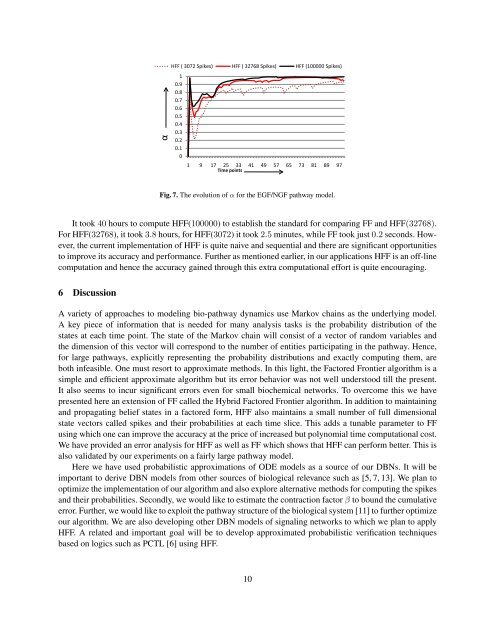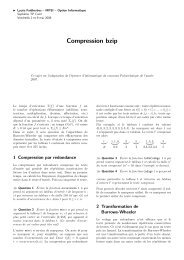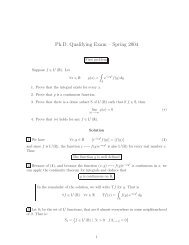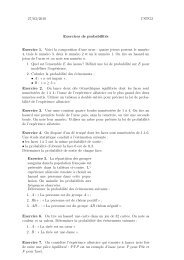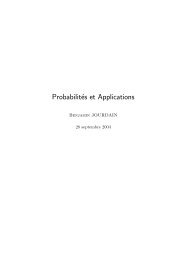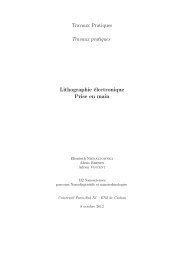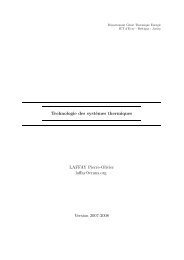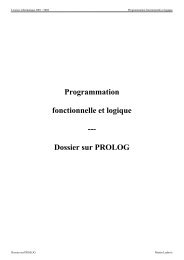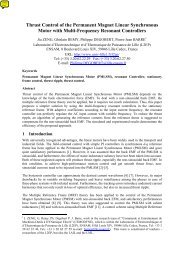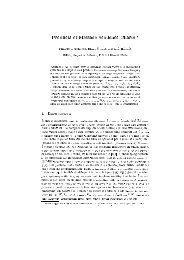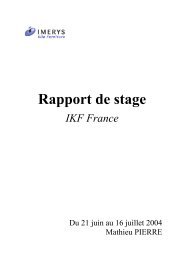A Hybrid Factored Frontier Algorithm for Dynamic Bayesian Networks
A Hybrid Factored Frontier Algorithm for Dynamic Bayesian Networks
A Hybrid Factored Frontier Algorithm for Dynamic Bayesian Networks
You also want an ePaper? Increase the reach of your titles
YUMPU automatically turns print PDFs into web optimized ePapers that Google loves.
αHFF ( 3072 Spikes) HFF ( 32768 Spikes) HFF (100000 Spikes)10.90.80.70.60.50.40.30.20.101 9 17 25 33 41 49 57 65 73 81 89 97Time pointsFig. 7. The evolution of α <strong>for</strong> the EGF/NGF pathway model.It took 40 hours to compute HFF(100000) to establish the standard <strong>for</strong> comparing FF and HFF(32768).For HFF(32768), it took 3.8 hours, <strong>for</strong> HFF(3072) it took 2.5 minutes, while FF took just 0.2 seconds. However,the current implementation of HFF is quite naive and sequential and there are significant opportunitiesto improve its accuracy and per<strong>for</strong>mance. Further as mentioned earlier, in our applications HFF is an off-linecomputation and hence the accuracy gained through this extra computational ef<strong>for</strong>t is quite encouraging.6 DiscussionA variety of approaches to modeling bio-pathway dynamics use Markov chains as the underlying model.A key piece of in<strong>for</strong>mation that is needed <strong>for</strong> many analysis tasks is the probability distribution of thestates at each time point. The state of the Markov chain will consist of a vector of random variables andthe dimension of this vector will correspond to the number of entities participating in the pathway. Hence,<strong>for</strong> large pathways, explicitly representing the probability distributions and exactly computing them, areboth infeasible. One must resort to approximate methods. In this light, the <strong>Factored</strong> <strong>Frontier</strong> algorithm is asimple and efficient approximate algorithm but its error behavior was not well understood till the present.It also seems to incur significant errors even <strong>for</strong> small biochemical networks. To overcome this we havepresented here an extension of FF called the <strong>Hybrid</strong> <strong>Factored</strong> <strong>Frontier</strong> algorithm. In addition to maintainingand propagating belief states in a factored <strong>for</strong>m, HFF also maintains a small number of full dimensionalstate vectors called spikes and their probabilities at each time slice. This adds a tunable parameter to FFusing which one can improve the accuracy at the price of increased but polynomial time computational cost.We have provided an error analysis <strong>for</strong> HFF as well as FF which shows that HFF can per<strong>for</strong>m better. This isalso validated by our experiments on a fairly large pathway model.Here we have used probabilistic approximations of ODE models as a source of our DBNs. It will beimportant to derive DBN models from other sources of biological relevance such as [5, 7, 13]. We plan tooptimize the implementation of our algorithm and also explore alternative methods <strong>for</strong> computing the spikesand their probabilities. Secondly, we would like to estimate the contraction factor β to bound the cumulativeerror. Further, we would like to exploit the pathway structure of the biological system [11] to further optimizeour algorithm. We are also developing other DBN models of signaling networks to which we plan to applyHFF. A related and important goal will be to develop approximated probabilistic verification techniquesbased on logics such as PCTL [6] using HFF.10


